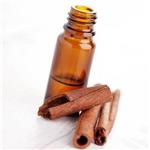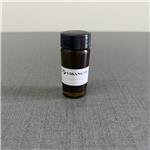- Cinnamon oil
-

- $0.00 / 1kg
-
2024-04-23
- CAS:8007-80-5
- Min. Order: 1kg
- Purity: 99% GC
- Supply Ability: 1000kg
- Cinnamon oil
-

- $0.00 / 1kg
-
2023-12-23
- CAS:8007-80-5
- Min. Order: 1kg
- Purity: 99%
- Supply Ability: 50000kg
- Cinnamon oil
-

- $0.00 / 25KG
-
2023-10-26
- CAS:8007-80-5
- Min. Order: 1KG
- Purity: 99%
- Supply Ability: 50000KG/month
|
| | Cinnamon oil Basic information |
| Product Name: | Cinnamon oil | | Synonyms: | oilofchinesecinnamon;oilofcinnamon;oilofcinnamon,ceylon;Oils,cassia;oils,cinnamon;oils,cinnamonzeylanicum;CASSIA OIL (CHINESE CINNAMON OIL);CASSIA OIL, NATURAL REDISTILLED | | CAS: | 8007-80-5 | | MF: | | | MW: | 0 | | EINECS: | 616-916-4 | | Product Categories: | Essential oil;8007-80-5 | | Mol File: | Mol File | ![Cinnamon oil Structure]() |
| | Cinnamon oil Chemical Properties |
| Boiling point | 194-234 °C | | density | 1.03 g/mL at 25 °C(lit.) | | FEMA | 2258 | CASSIA BARK OIL | | refractive index | n20/D 1.592 | | Fp | 199 °F | | storage temp. | 2-8°C | | Odor | at 1.00 % in dipropylene glycol. sweet spicy aldehydic aromatic cinnamyl woody resinous honey gourmand powdery | | Odor Type | spicy | | EPA Substance Registry System | Oils, cassia (8007-80-5) |
| | Cinnamon oil Usage And Synthesis |
| Chemical Properties | The volatile oil obtained by steam distillation from the dried inner bark of the shoots of coppiced, cultivated bushes of
C. zeylanicus Nees. It has an odor of cinnamon and a spicy burning taste. | | Chemical Properties | Cassia oil (Chinese cinnamon oil) is obtained by steam distillation of the
leaves, twigs, and bark of Cinnamomum aromaticum Nees (Cinnamomum
cassia Blume, Lauraceae) mainly growing in China. It is a reddish-brown liquid
with a sweet–spicy, cinnamon-like odor.
d2020 1.052–1.070; n20D 1.6000–1.6140; solubility: 1 vol in 3 vol of 70%
ethanol at 20 ℃; acid number: max. 15; content of carbonyl compounds
(calculated as cinnamaldehyde): min. 80%.
In contrast to cinnamon bark oil, cassia oil contains a considerable amount
of 2-methoxycinnamaldehyde (3–15%) in addition to its main constituent,
cinnamaldehyde (70–88%). Cassia oil is used predominantly in
flavoring soft drinks (cola-type). Annually ≥600 t are produced in China,
smaller quantities in Vietnam. | | Physical properties | It is a yellow liquid and soluble in most fixed oils and propylene glycol. It is insoluble in glycerin
and in mineral oil. | | Occurrence | Found in the bark of the shrub Cinnamomum zeylanicum Nees (Fam: Laura-ceae). Cinnamon oil is mainly extracted from the bark and leaves of the many species of the genus Cinnamomum of the Laurel family (Lauraceae), which is widely distributed throughout the tropical and subtropical Asia, and from waste products formed during the preparation of cinnamon spice. However, Cinnamomum zeylanicum, native to Sri Lanka, is the chief source of cinnamon spice and oil worldwide. | | Uses | cinnamon bark oil has similar properties to those of cinnamon oil, but this distillation of the plant’s bark is considered of much higher quality than extractions from the plant’s leaves. use in high doses or in high concentrations could produce skin irritations. | | Uses | cinnamon oil (Cinnamomum zeylanicum) is said to have a stimulating effect on the skin. It can also be used for fragrance. Widely recognized for its tonic and antiseptic properties, cinnamon oil is very important in traditional pharmacopoeia. Cinnamon oil is used in a wide variety of skin care and make-up preparations. It is obtained from distillation of the plant’s leaves. It can cause irritation if used in high doses. | | Uses | Used extensively as spice and flavoring in foods, beverages, pharmaceuticals. Ingredient in spice blends such as garam masala. | | Definition | Extractives and their physically modified derivatives. Cinnamomum cassia, Lauraceae. | | Preparation | By steam distillation of the dried inner bark of the shrub C. zeylanicum Nees (Guenther. 1950).
Steam distillation is the simplest method to extract the essential oil from cinnamon. Steam distillation is mostly used to extract various types of essential oils. The process is cheaper than other extraction methods. It does not require any solvent and is safer than other methods. | | Essential oil composition | The chief constituent of cinnamon bark oil is cinnamic aldehyde | | Composition | Cinnamaldehyde and eugenol have been reported to be the main constituents in the oil and extract of C. zeylanicum, while others have also reported eugenyl acetate. However, the composition of cinnamon oil, and hence its potential use, depends very much on the species that is distilled as well as the part of the plant which is utilized. Cinnamon bark oil contains cinnamaldehyde as the major constituent, while cinnamon leaf oil’s major constituent is eugenol rather than cinnamaldehyde. Cinnamon has been found to be effective in inhibiting the mycotoxigenic Aspergillus species Aspergillus parasiticus. | | Biochem/physiol Actions | Taste at 10 ppm | | Safety Profile | Poison by skin contact.
Moderately toxic by ingestion and
intraperitoneal routes. A human skin irritant.
Mutation data reported. See also
CINNAMALDEHYDE and
ALDEHYDES. When heated to
decomposition it emits acrid smoke and
irritating fumes. | | Metabolism | Cinnamic aldehyde, the chief constituent of cinnamon bark oil, is oxidized to cinnamic acid, which is then degraded to benzoic acid (Williams, 1959). Additional published data |
| | Cinnamon oil Preparation Products And Raw materials |
|